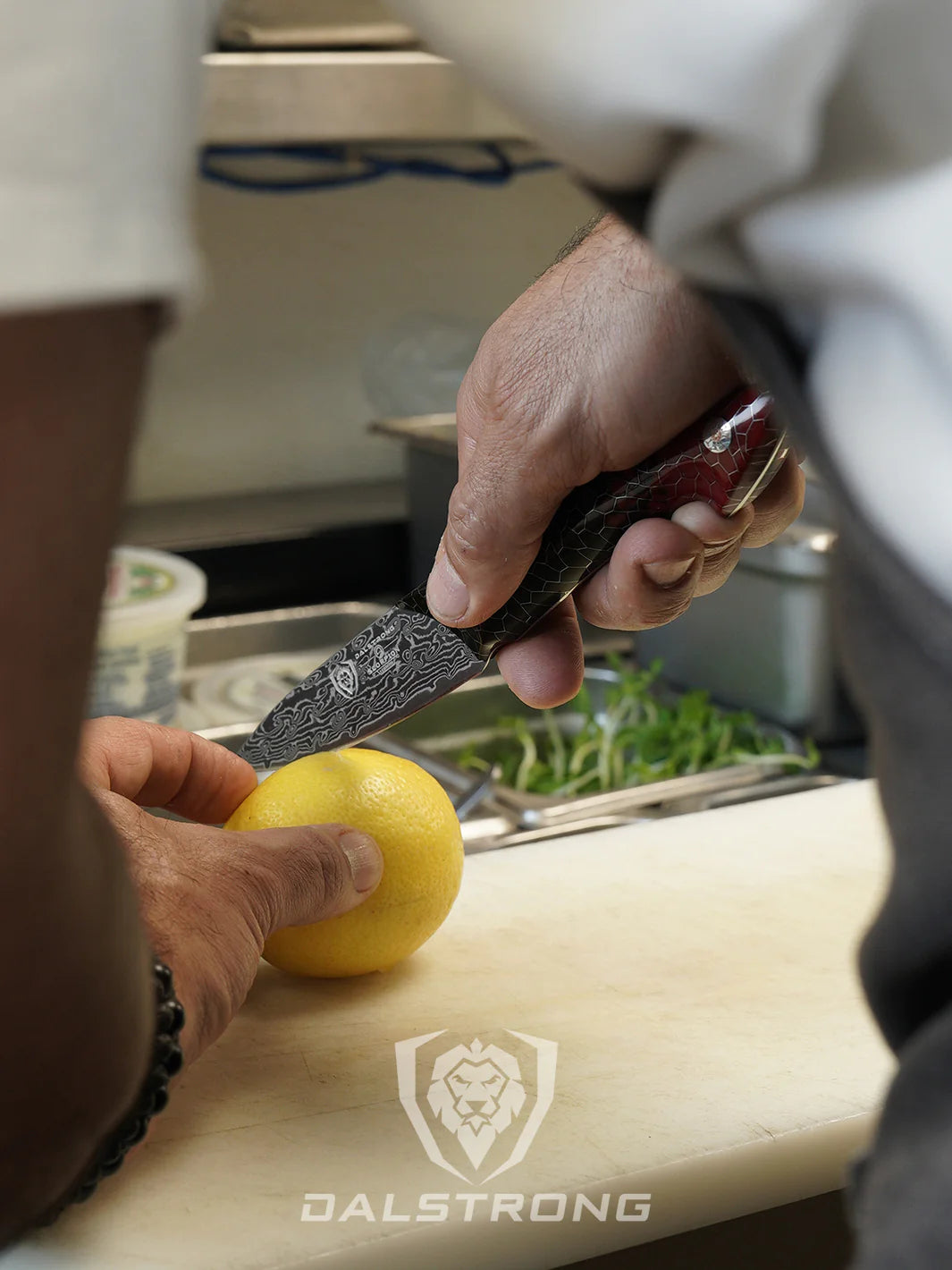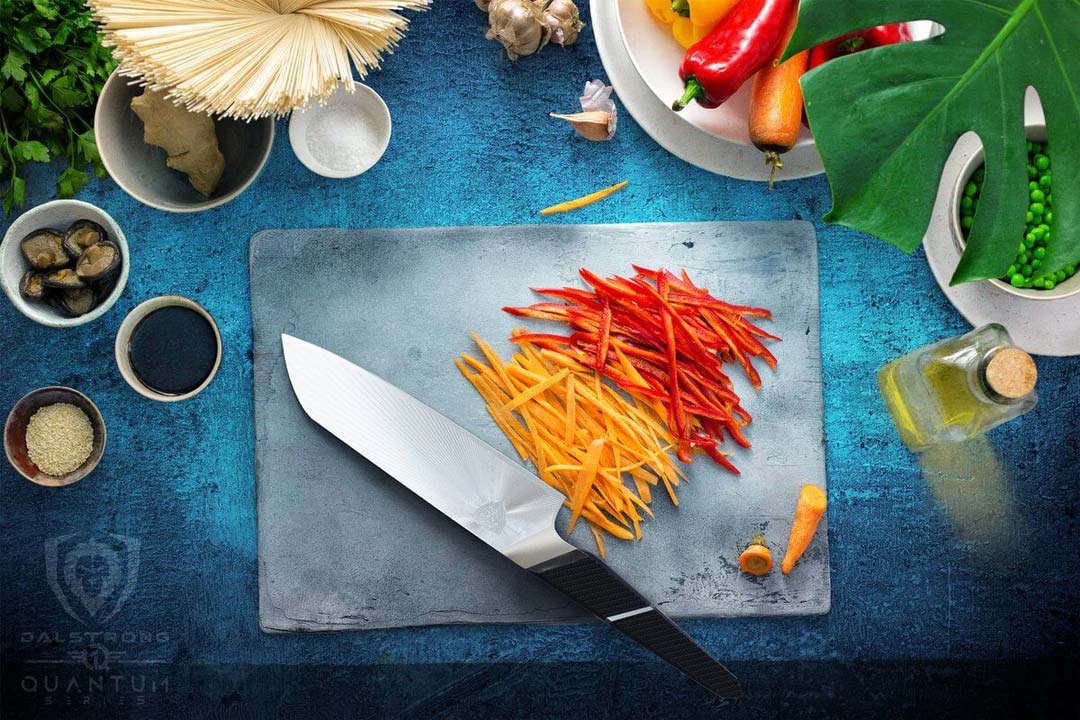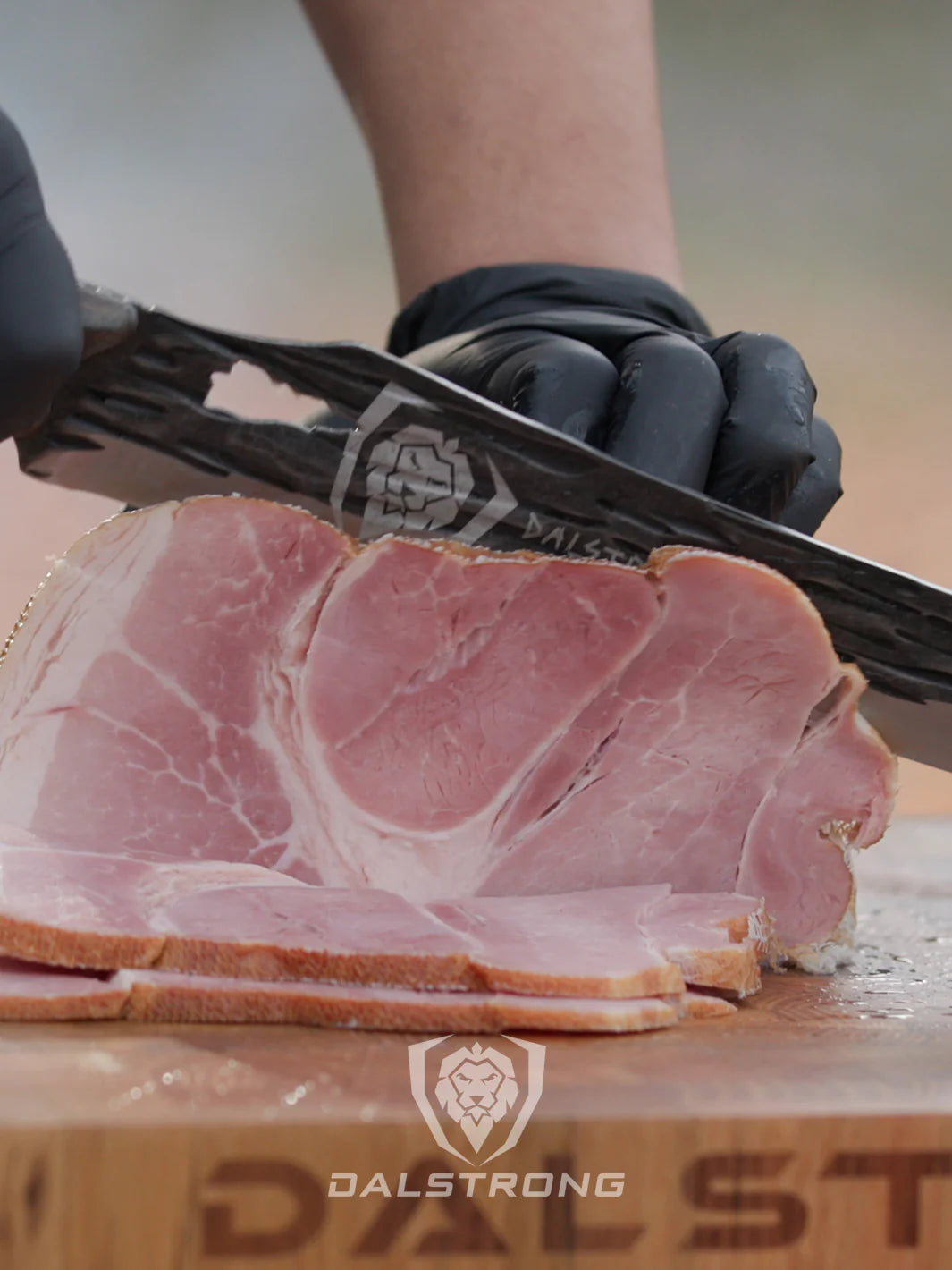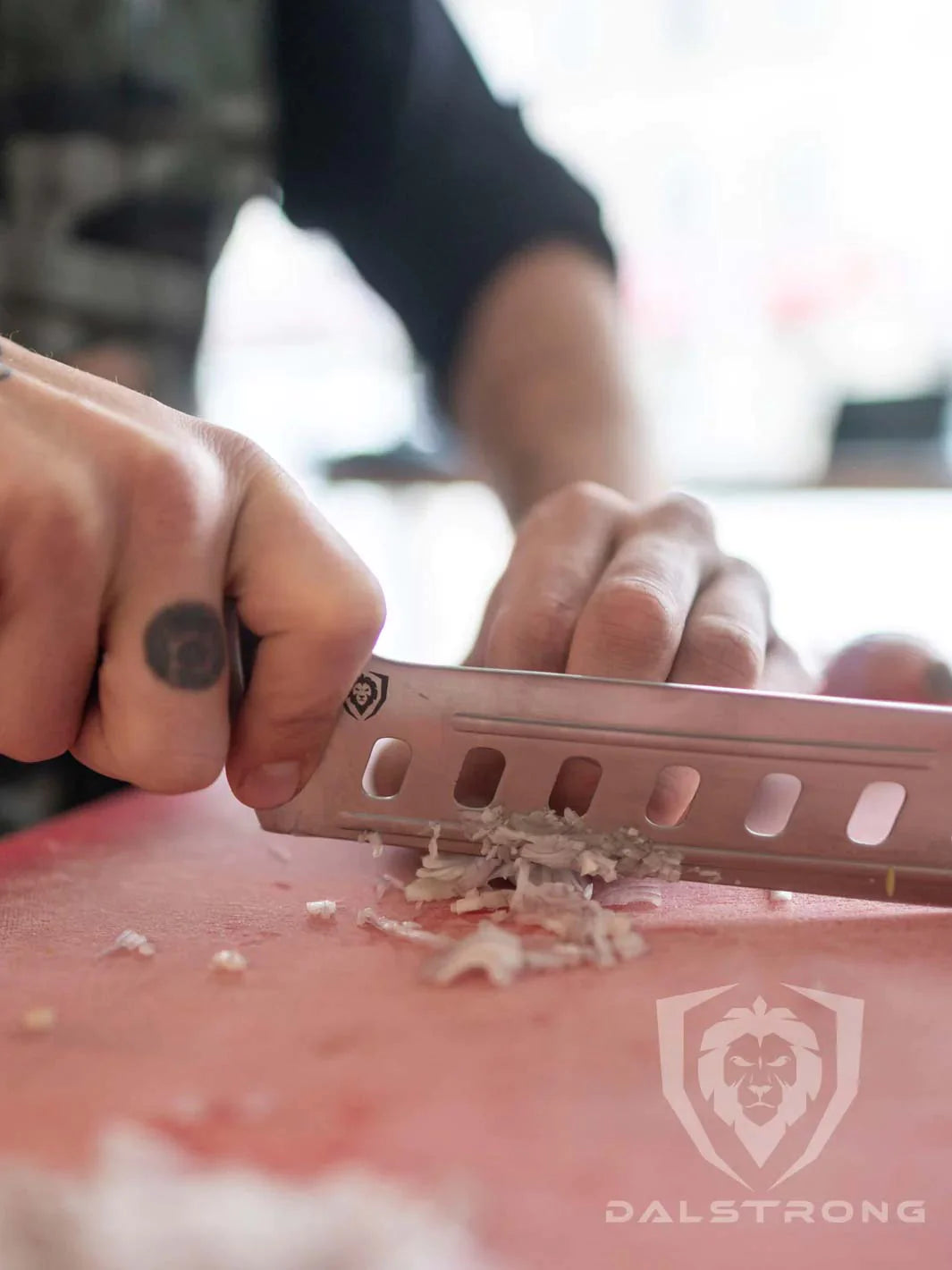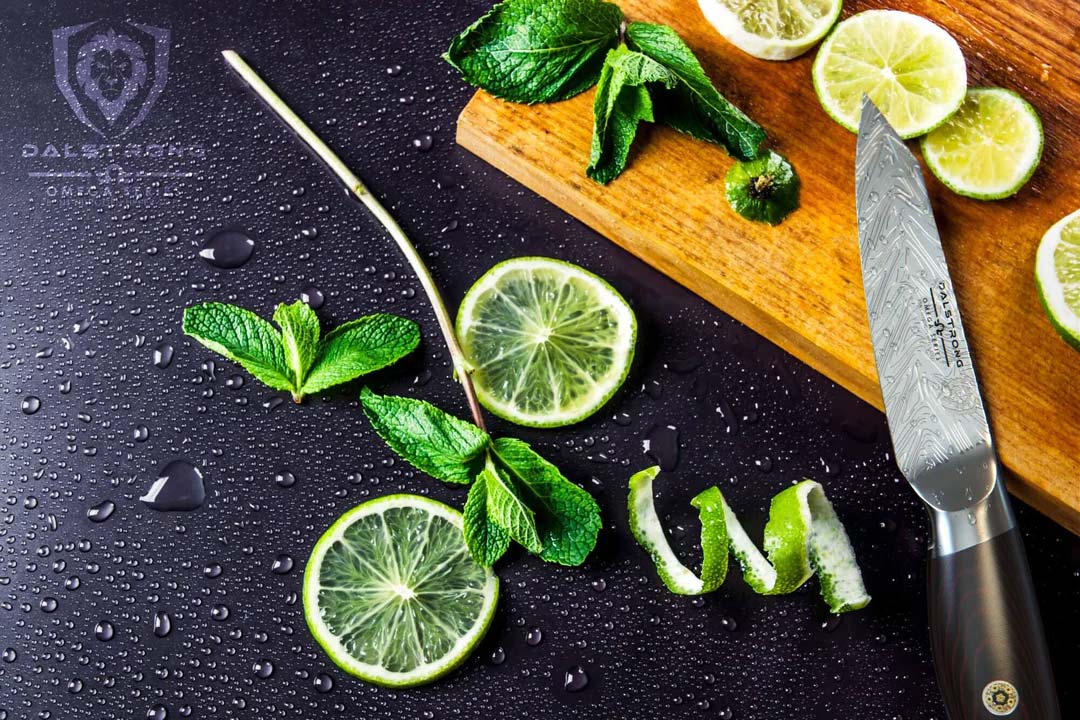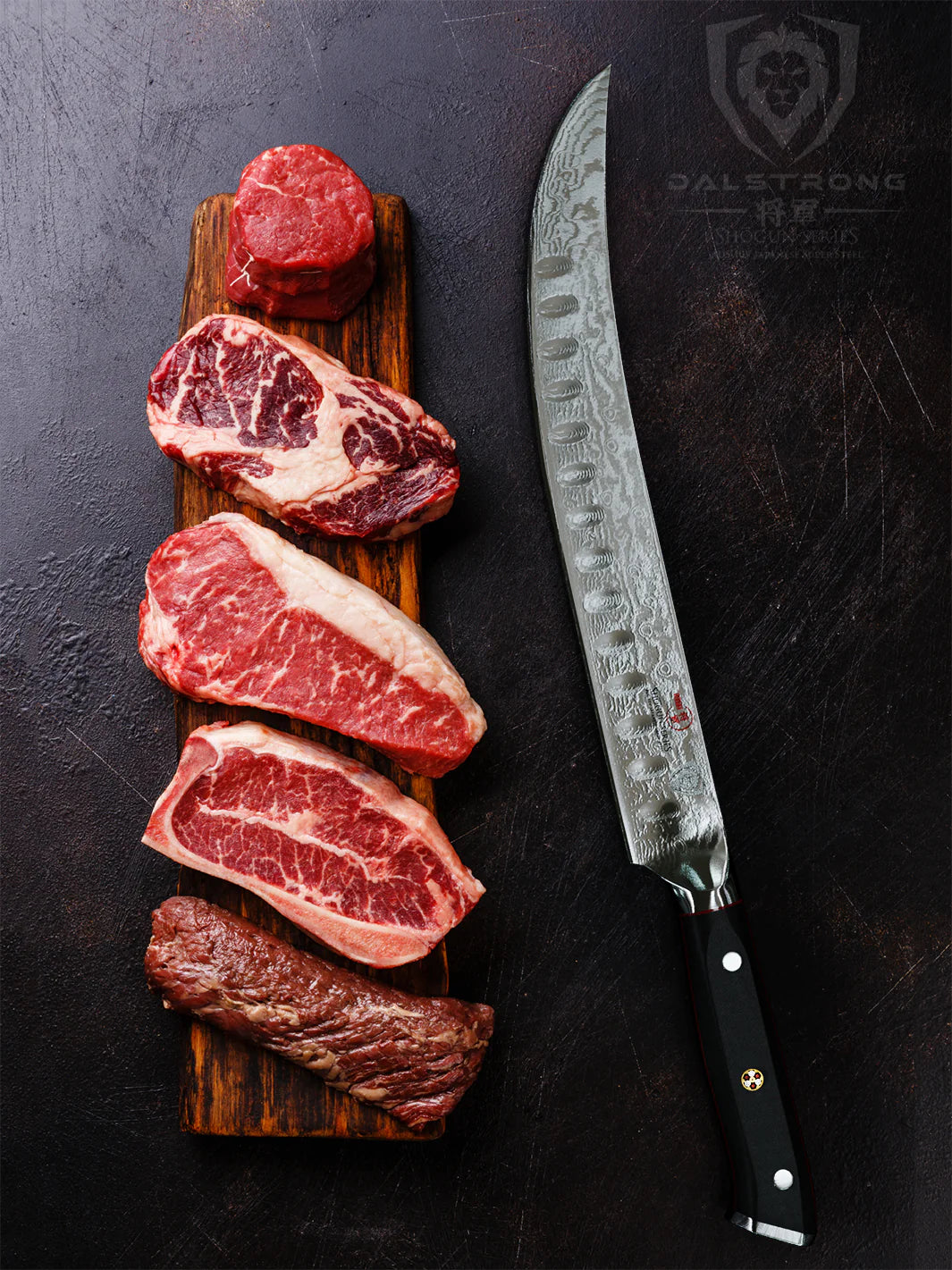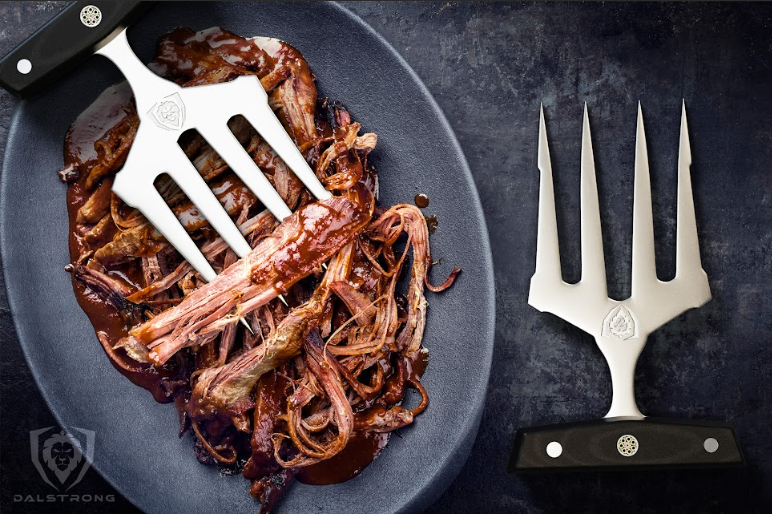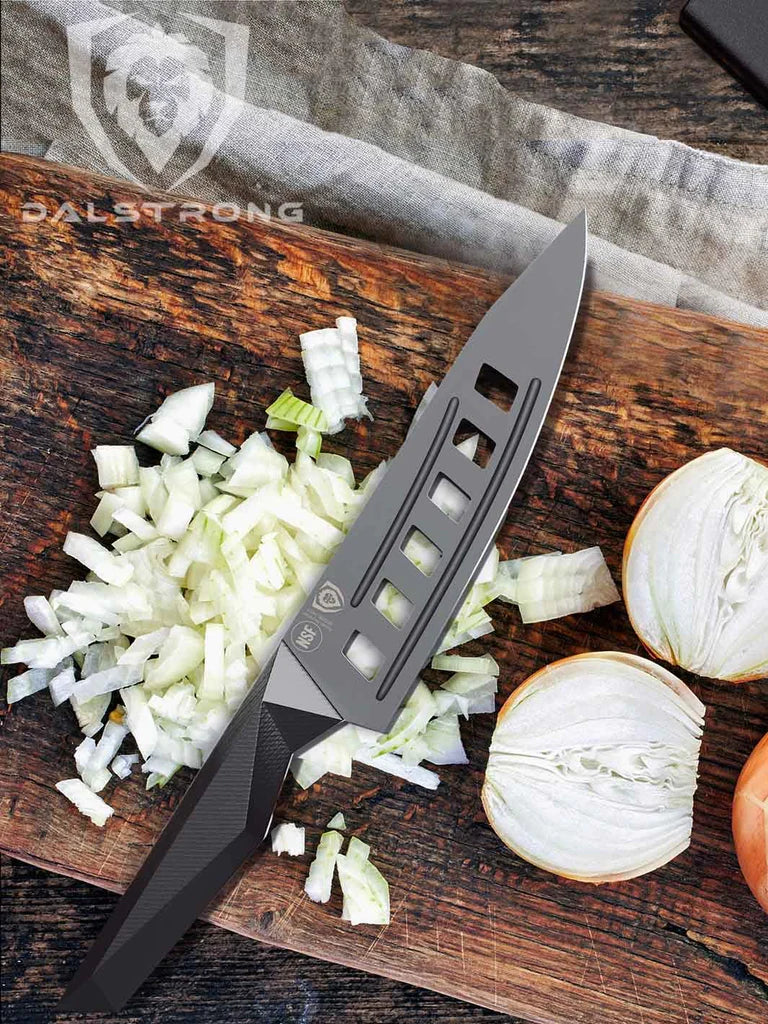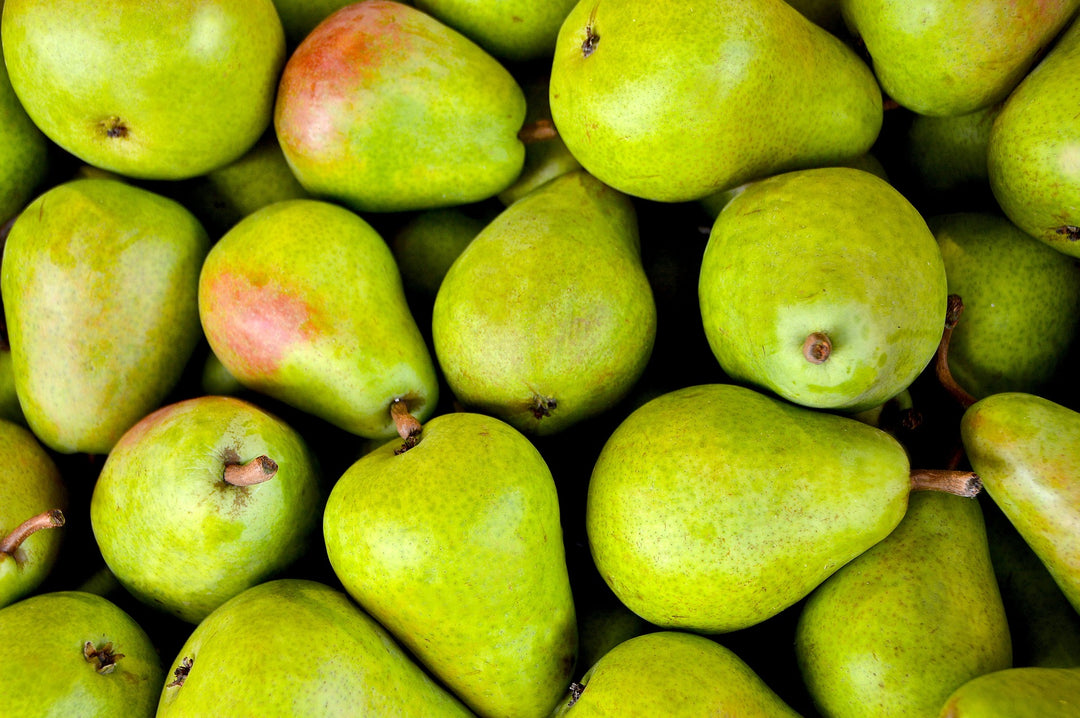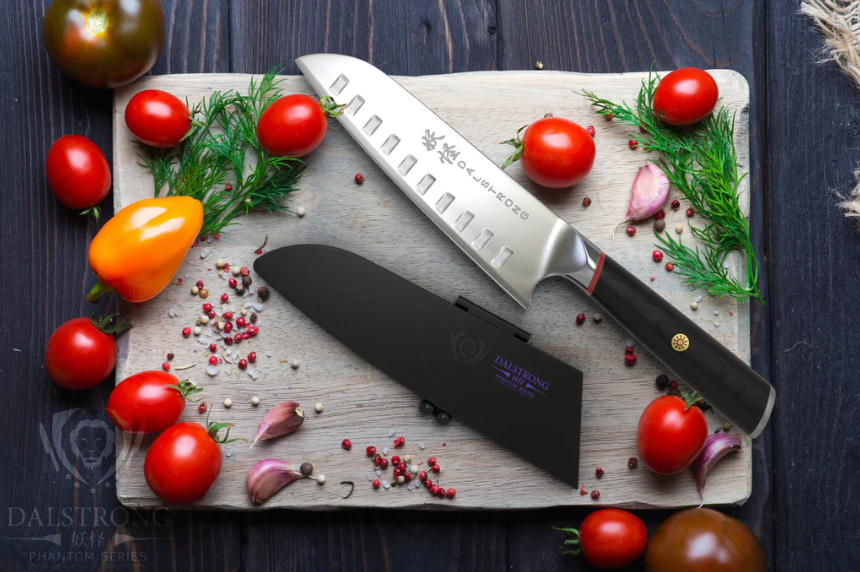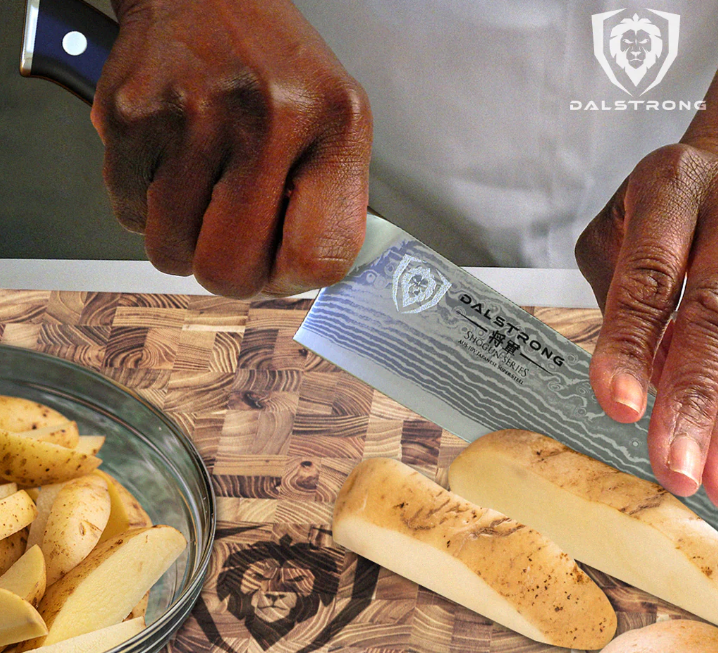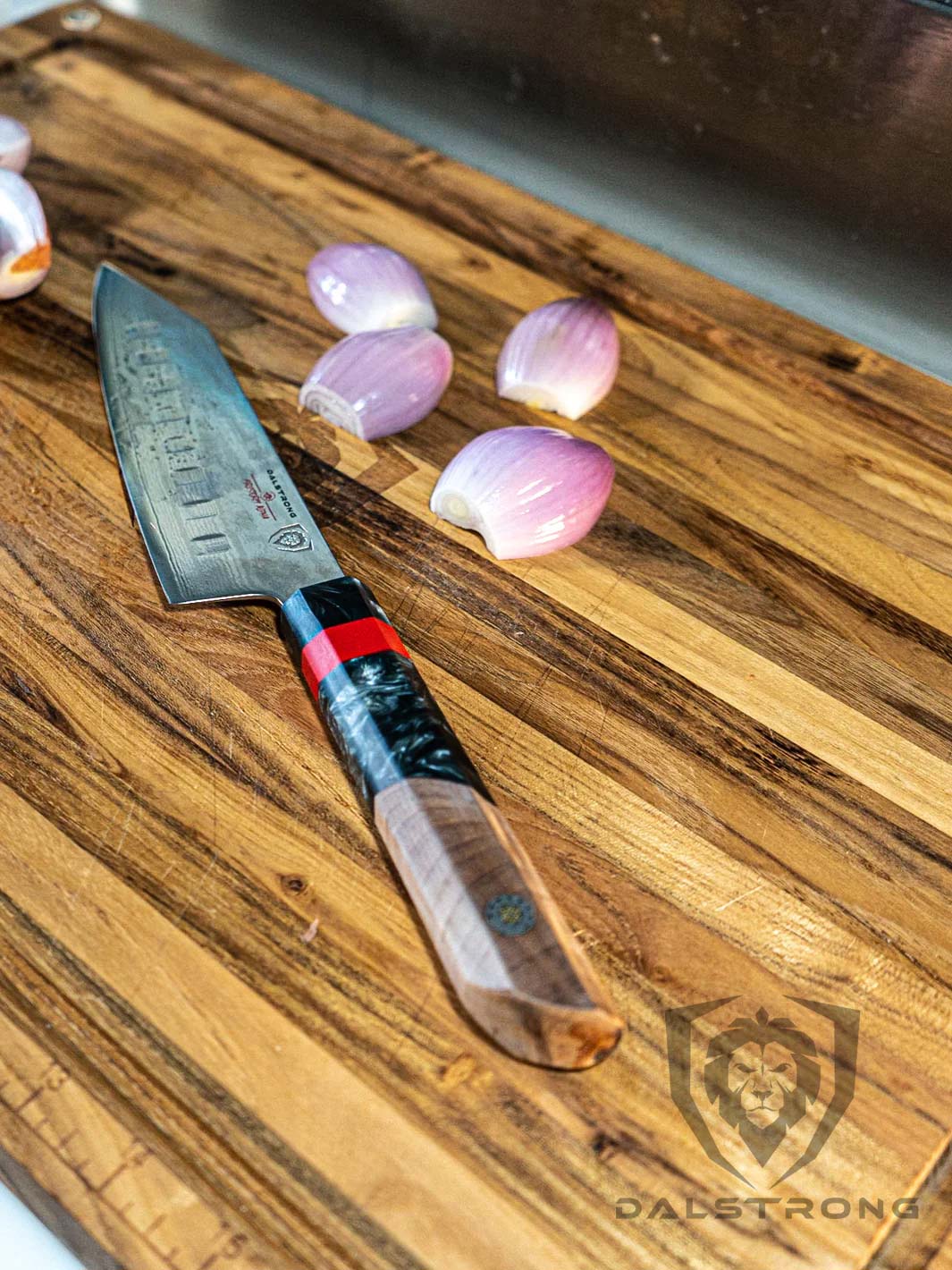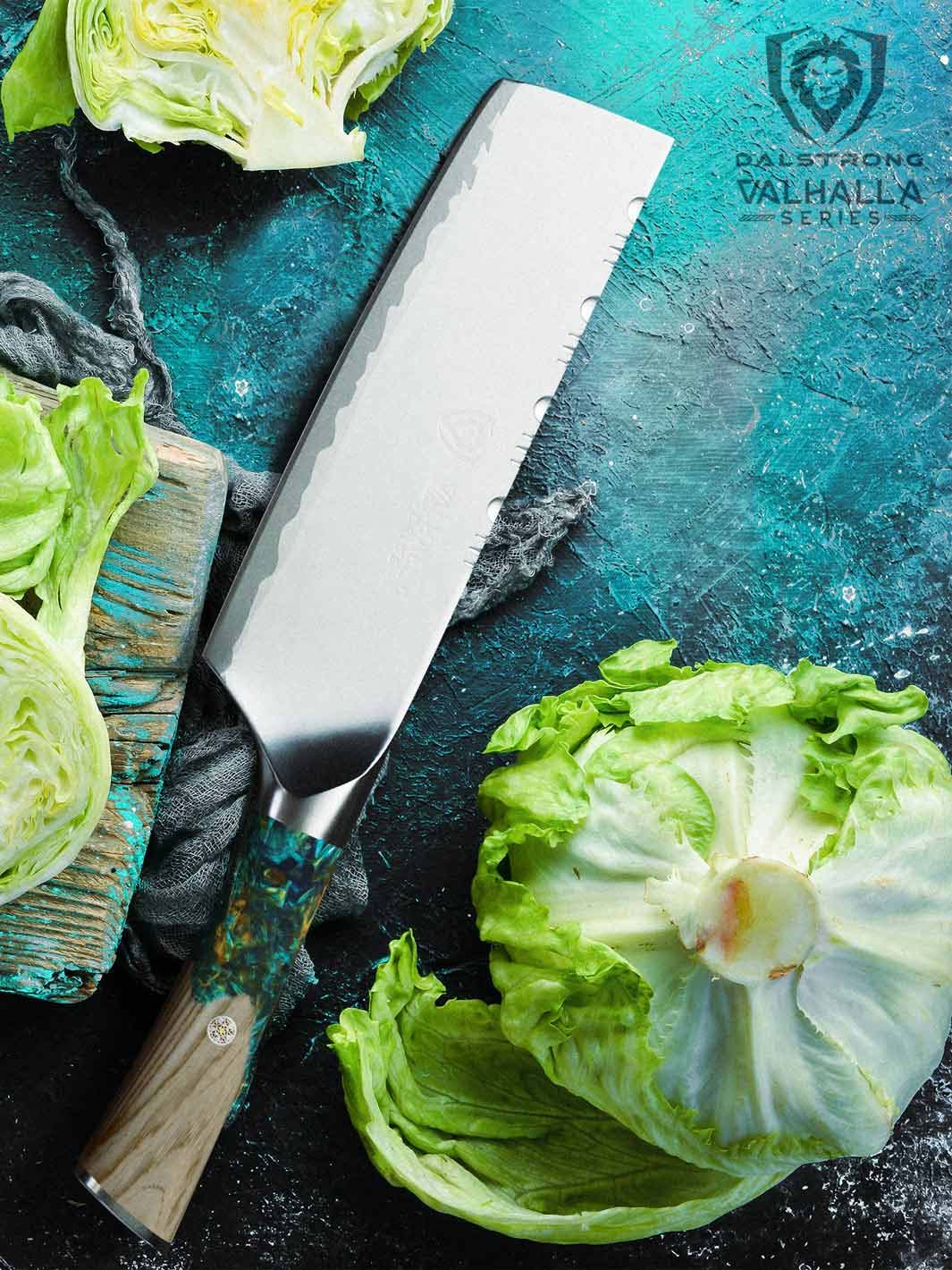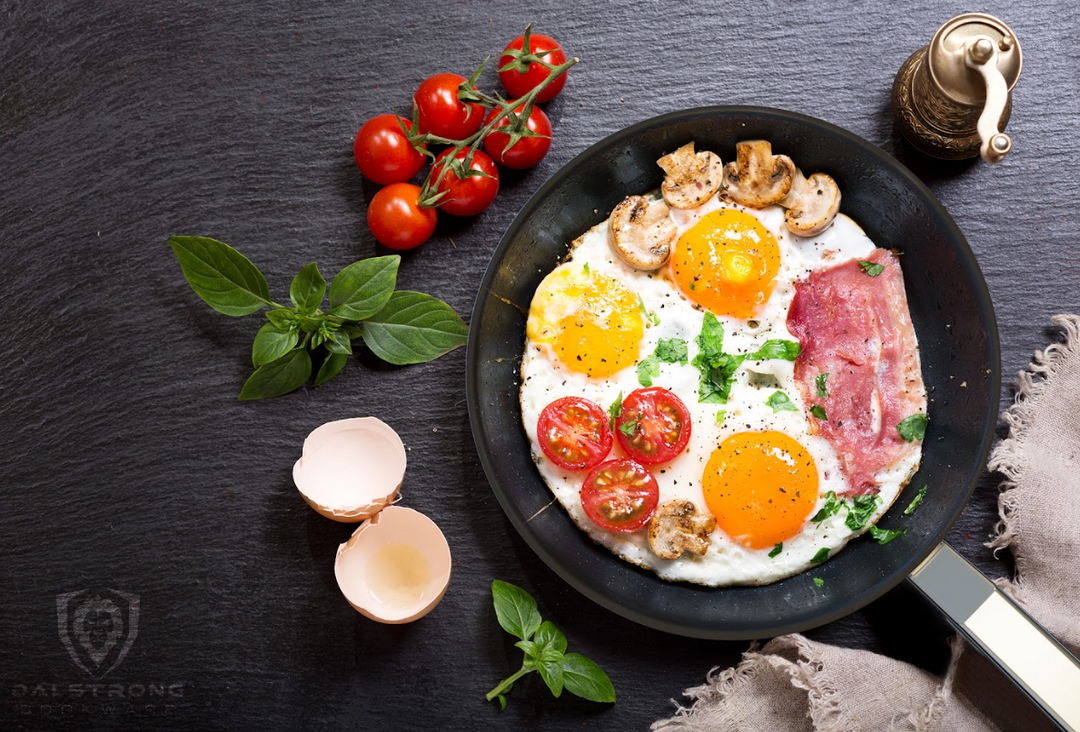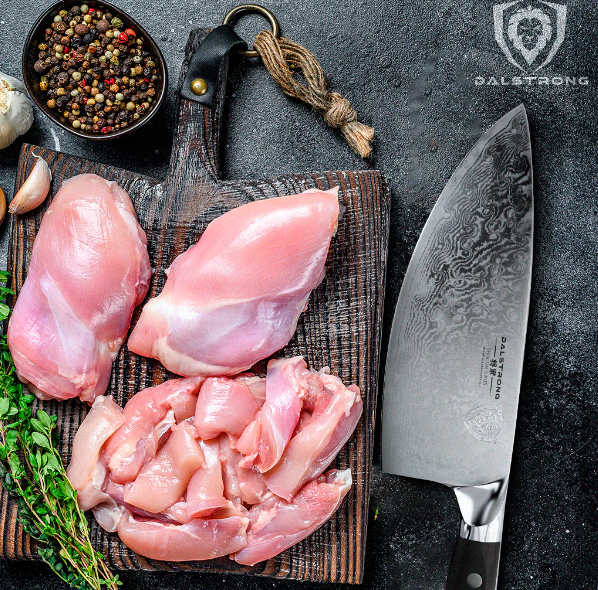The Ideal Salmon Cooking Temperature
Cooking the perfect salmon depends, in many ways, on nailing the perfect salmon temperature. Like finding the sweet spot on your comfy couch, getting the temperature just right can transform your fish from "meh" to "magnificent."
1. What Is The Ideal Cooking Temperature For Salmon
 Valhalla Series Boning Knife 6"
Valhalla Series Boning Knife 6"
The magic number for baking salmon tends to hover around 145°F. This recommended cooking temperature ensures your salmon is moist and tender, but not overcooked. Keeping your oven on a lower temperature can help in avoiding overcooking, especially if you’re a fan of a more medium rare finish. Remember, cooking salmon is not a sprint to the finish line; it’s more like a leisurely stroll to perfection.
2. How To Know When The Salmon Is Done
 Shadow Black Series Straight Boning Knife 6"
Shadow Black Series Straight Boning Knife 6"
Checking the internal temperature with an instant-read thermometer is your best bet to avoid guesswork. When the internal temperatures hit that 145°F mark, your cooked salmon temperature is ideal. If you don't have a thermometer, watch for the flesh to become opaque and flake easily with a fork. Keep an eye out for the white stuff (albumin), which is a protein that coagulates on the surface of the salmon when it's cooked.
Read about salmon health benefits, here.
3. Salmon Temperature Guide By Doneness
 Oberon Series 9" Frying Pan & Skillet
Oberon Series 9" Frying Pan & Skillet
If you’re a texture aficionado, knowing how much heat your fish needs can make or break your meal. Here’s a quick rundown:
Medium Rare
Aim for an internal salmon temperature of around 125°F. The center will be slightly translucent with a sous vide-like tenderness.
Medium
This is the sweet spot for many, achieved at 135°F. It’s the thickness of the fish that often dictates whether it leans more towards medium rare or well-done.
Well-Done
Going up to 145°F will have your salmon firm and fully opaque, ideal for those who like their fish fully cooked but still moist and tender.
Raw salmon?
When it comes to eating salmon rare or raw, it's important to understand the safety concerns and handling practices involved. Consuming raw or rare salmon is common in dishes like sushi and sashimi, and can be perfectly safe if the salmon is handled and prepared correctly. Typically, to ensure safety, salmon should be frozen at -4°F (-20°C) or colder for at least seven days, or at -31°F (-35°C) for 15 hours, to kill any parasites that might be present. This is a standard practice in restaurants and sushi bars to comply with FDA regulations.
However, when cooking salmon at home, if you prefer it rare, you must ensure you're using high-quality, sushi-grade salmon that has been properly frozen to reduce the risk of parasites and bacteria. As a general rule, pregnant women, young children, the elderly, and those with compromised immune systems should avoid eating raw or undercooked fish due to the higher risk of foodborne illness.
If you're unsure about the quality or origin of your salmon, it's safer to cook it to an internal temperature of 145°F to ensure any harmful microorganisms are killed. Eating rare salmon at home is about managing risk with informed choices and meticulous attention to the quality and handling of the fish.
4. Tips to Avoid Overcooking Salmon
 Delta Wolf Series Chef's Knife 8"
Delta Wolf Series Chef's Knife 8"
Overcooked salmon is a culinary tragedy, akin to watching your favorite salmon recipes go up in smoke. But fear not, home cooks! Here's a comprehensive guide from our test kitchen to keep your fish perfectly tender and flaky, whether you're using a traditional oven temperature, air fryer, or even the trusty instant pot.
Use the Right Temperature and Tools
Cooking times and temperatures are crucial for perfect doneness. Aim for an oven temperature of 325°F when cooking salmon in the oven—a moderate heat that cooks the salmon gently. For those using an air fryer, setting it to 400°F usually allows a quicker sear without drying out the fish. And yes, air fryer salmon can be just as succulent!
Internal temps should be monitored closely. The internal temperature of salmon should reach 145°F, but for those who enjoy a little less doneness, minimum salmon internal temp might hover around 125°F for a medium rare finish. Whether it's farmed salmon or wild salmon, using a meat thermometer or an instant-read thermometer can prevent that dreaded overcooking.
Selecting Your Salmon
Choosing the right type of salmon can also affect cooking. Atlantic salmon and Pacific salmon (like sockeye or king salmon) have different fat contents and connective tissue structures, which can influence how quickly they cook. Marinated salmon or glazed salmon, especially recipes with sugar, might brown faster, so they need a watchful eye.
Cooking Techniques and Preparations
For those favoring sous vide, it's a foolproof method where you can control the exact temperature to cook salmon, ensuring perfect salmon internal temp every time. If you're baking, try salmon in foil to lock in moisture, or use a sheet pan for an easy, no-fuss dinner. Cooking tips often recommend minutes per inch of thickness to gauge cooking times—typically, 10 minutes per inch at 325°F should do the trick.
Grilled salmon and smoked salmon require keeping a close eye on times and temperatures. The internal temp of salmon is your best clue for doneness. Always adjust your cook temperatures and times depending on the thickness of the fish.
5. Dalstrong Tools You'll Need
1. Phantom Series | Fillet & Boning Knife 6.5"
The Phantom Series 6.5” Fillet & Boning Knife is your go-to tool for getting up close and personal with meats and fish. Whether you’re filleting salmon or deboning chicken, this knife’s narrow, curved blade, made from top-notch Japanese AUS-8 steel, makes the job smooth and simple. It’s super sharp, holds its edge like a dream, and the cool ‘phantom’ engraving? Just a bonus. It even comes with its own sleek Dalstrong sheath to keep it safe and sound.
PROS:
- That curved blade just slides right around bones and under fish skin, making filleting salmon a breeze.
- The blade stays sharp for ages, thanks to the high-quality Japanese steel and ice-tempering.
- Feels great in your hand with its fancy pakkawood handle – comfortable and sturdy.
- You get a sharp-looking sheath to protect your investment (and your fingers!).
CONS:
- Might not be your everyday knife – its special design is best for boning and filleting.
- There might be a bit of a learning curve if you've never used a filleting knife before..
2. Shogun Series ELITE | Kiritsuke Chef's Knife 8.5"
This knife is a masterful blend of a Japanese yanagiba and usuba, making it a top choice for slicing fish like salmon and chopping veggies. This knife sports a long, straight edge with a sword-like tip that can handle everything from precise sushi cuts to quick vegetable chops. Made with ultra-premium Japanese AUS-10V super steel, this knife offers a sharpness that’s hard to beat.
PROS:
- Perfect for precision tasks like slicing salmon thanks to its straight edge and sharp tip.
- Holds its edge longer with high-carbon Japanese steel, making it a reliable companion in the kitchen.
- The G-10 Garolite handle is not only ergonomic but also resistant to heat and moisture, ensuring durability.
- Includes a beautifully designed saya, keeping the knife safe and adding a touch of elegance to your kitchen gear.
CONS:
- Its specialized design and sharpness require some skill, so it might not be the best starter knife.
- Compared to the previous knife, it’s less focused on filleting but offers more versatility with other kitchen tasks.
3. Gladiator Series | Yanagiba Knife 10.5"
Great for ultra-thin, precise cuts, especially when you're working with delicate salmon for sashimi. This knife, with its high-carbon German steel blade, is traditionally used in Japanese cuisine for raw fish, making it a no-brainer for slicing salmon like a pro. Its long, single-bevel blade is designed to cut smoothly through flesh, enhancing flavor and texture.
PROS:
- Ideal for creating perfect sashimi slices from salmon, thanks to its precise, single-bevel edge.
- The high-carbon content of the German steel ensures the blade stays razor-sharp through many uses.
- Features a comfortable, ambidextrous black G10 Garolite handle that’s tough against heat, cold, and moisture.
- It's not just for fish; this versatile knife can handle everything from poultry to pork tenderloins.
CONS:
- The specialized single-bevel design might take some getting used to if you’re more familiar with standard double-beveled knives.
- While it excels in precision cutting, it’s less adaptable than multi-purpose knives like the Shogun Series Kiritsuke for everyday kitchen tasks.
4. Shadow Black Series | Yanagiba Sushi Knife 10.5"
This sushi slicing wizard is the ideal partner for those ultra-thin, super precise cuts you need when preparing salmon sashimi. With its high-carbon 7CR17MOV-X steel and sleek black titanium-nitride coating, this knife looks and performs awesome. The single-bevel blade is a nod to traditional Japanese craftsmanship, tailored for tasks where precision is key.
PROS:
- The extra-sharp 16-18° angled blade makes slicing through salmon feel like cutting through butter.
- Its tall blade height and full tang design offer great knuckle clearance and robust control, perfect for lengthy sushi prep sessions.
- The non-reflective black coating isn’t just for looks – it reduces stickiness and wards off corrosion.
- The ergonomically designed handle and polished spine ensure a comfortable grip, making those precise cuts easier on your hands.
CONS:
- Like the Gladiator Series Yanagiba, this knife’s single-bevel edge means there’s a bit of a learning curve if you’re used to more conventional knives.
- The specialized design is superb for sashimi and sushi but might not be as versatile for other kitchen tasks.
5. Dalstrong Professional Slotted Fish Spatula 7.5"
And that brings us to this. It's not a knife, but I figured it would come in handy for cooking salmon... the Dalstrong 7.5” Flexible Fish Spatula. This isn't your average spatula; it's built with the same attention to detail and quality you'd expect from high-end kitchen tools. Crafted from premium, anti-corrosion stainless steel, this spatula is designed to handle the delicate task of flipping salmon fillets without any fuss.
PROS:
- Its thin, flexible design makes it easy to slide under salmon fillets, ensuring you can flip them without them falling apart.
- The slots in the spatula let oil drain away, which is great for getting that crispy skin on the salmon while keeping the cleanup minimal.
- Built with a military-grade G-10 fiberglass resin handle, it’s designed for comfort and can withstand the heat of any kitchen.
- It’s not just for fish; this spatula is versatile enough for flipping pancakes, grilling burgers, or even transferring cookies.
CONS:
- While it’s perfect for handling delicate foods like salmon, it might not be the first choice for those who need a utensil for heavier lifting.
6. Frequently Asked Questions
Is it better to bake salmon at 350 or 400?
Baking at 350°F is generally better to avoid overcooking, especially if your fillets are on the thinner side or you prefer them moist and tender.
What temperature should you eat salmon?
Ideally, salmon should be eaten when it reaches an internal temperature of 145°F, according to USDA guidelines to ensure safety and optimal texture.
Should salmon be cooked to 165?
Unlike ground beef or pork chops, salmon does not need to be cooked to 165°F. Salmon is perfect at 145°F, preserving its flavor and texture without drying it out.
What temperature is salmon done frying?
When frying, salmon should reach an internal temperature of about 145°F. However, if you’re pansearing salmon, you might pull it off the heat a bit earlier to allow for some carryover cooking.
What is the proper temperature for cooking salmon in different methods?
Whether it's baking, grilling, or using an instant pot, maintaining the right temperature is key. For most methods, keeping the oven or grill around 325°F to 350°F is ideal.
How do I know when my salmon is perfectly cooked?
Look for the flesh to become opaque and flake easily with a fork. The salmon is cooked when it reaches the desired internal temperature, checked by your instant read thermometer.
Can I use an instant pot or air fryer for cooking salmon?
Absolutely! An instant pot can be set to "steam" for a moist environment, while an air fryer gives a quicker, crispier finish. Both should be monitored for the right internal temp of salmon.





































































































































































